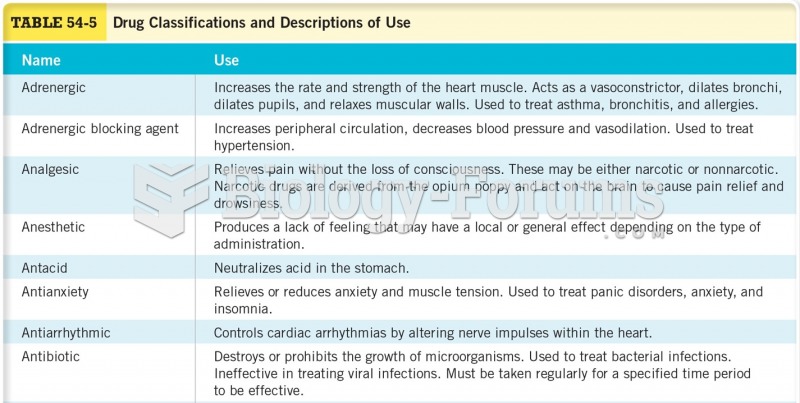Answer to Question 1
Correct Answer: 1
Rationale 1: The goal of HAART is to reduce the amount of HIV in the plasma to its lowest possible level. It must be understood, however, that HIV is harbored in locations other than the blood, such as in lymph nodes; therefore, elimination of the virus from the blood is not a cure.
Rationale 2: Increase the amount of HIV in the plasma is incorrect because the goal of HAART is to reduce the amount of HIV in the plasma to its lowest possible level.
Rationale 3: Decrease adverse effects from HAART therapy is incorrect because the goal of HAART is to reduce the amount of HIV in the plasma to its lowest possible level.
Rationale 4: Cure HIV is incorrect because there is no cure for HIV.
Global Rationale: The goal of HAART is to reduce the amount of HIV in the plasma to its lowest possible level. It must be understood, however, that HIV is harbored in locations other than the blood, such as in lymph nodes; therefore, elimination of the virus from the blood is not a cure. Increase the amount of HIV in the plasma is incorrect because the goal of HAART is to reduce the amount of HIV in the plasma to its lowest possible level. Decrease adverse effects from HAART therapy is incorrect because the goal of HAART is to reduce the amount of HIV in the plasma to its lowest possible level. Cure HIV is incorrect because there is no cure for HIV.
Answer to Question 2
Correct Answer: 2, 3, 4
Rationale 1: Increase HIV-related morbidity, and prolong survival is incorrect because the goal is to reduce HIV-related morbidity and prolong survival.
Rationale 2: Goals of pharmacotherapy of HIV/AIDS include suppressing viral load.
Rationale 3: Goals of pharmacotherapy of HIV/AIDS include improving the quality of life.
Rationale 4: Goals of pharmacotherapy of HIV/AIDS include preventing transmission from mother to child.
Rationale 5: Medication therapy does not prevent the spread of HIV/AIDS.
Global Rationale: Goals of pharmacotherapy of HIV/AIDS include suppressing viral load, improving quality of life, and preventing the transmission from mother to child in HIV-infected pregnant patients. Increase HIV-related morbidity, and prolong survival is incorrect because the goal is to reduce HIV-related morbidity and prolong survival. Medication therapy does not prevent the spread of HIV/AIDS.







